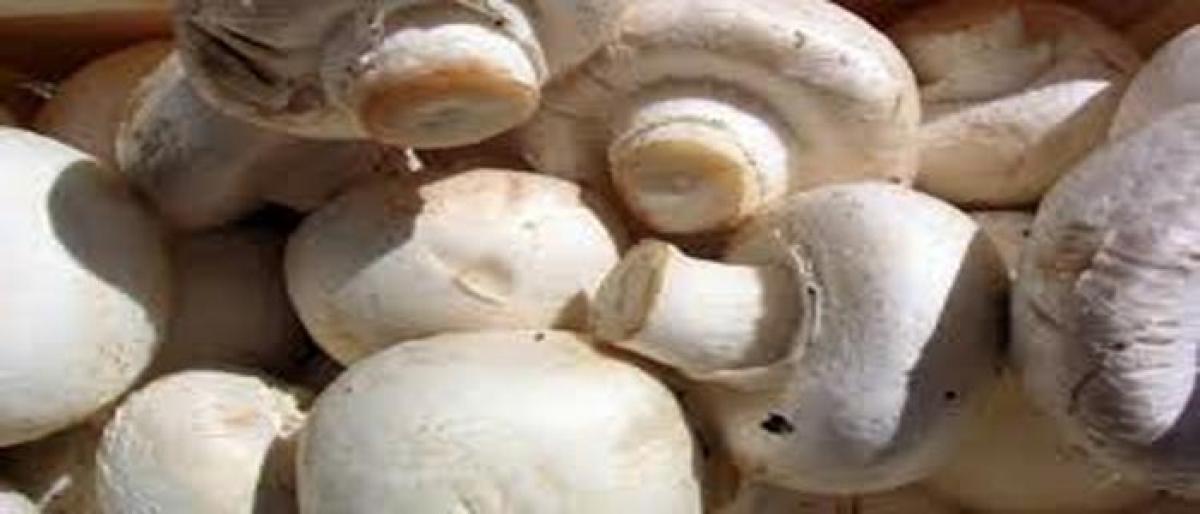Live
- TTD Board Makes Path-Breaking Decisions
- BRS Social Media In-charge Dilip Arrested for Provocative Posts
- Andhra Pradesh Assembly Approves Seven Major Bills
- Odisha BJP leader Samir Dey passes away
- Average grievance redressal time reduced to 13 days from 30 days: Centre
- Average grievance redressal time reduced to 13 days from 30 days: Centre
- Maharashtra all set for MahaYuti vs MVA contest as high-octane campaigning ends
- Employment rises in India’s urban areas during July-September
- Anshul Garg and Jubin Nautiyal Join Forces for a Soulful Romantic Anthem – ‘Hadh Se’
- Andhra: Actor Posani booked for derogatory comments against Chandrababu Naidu
Just In

Mushrooms may contain unusually high amounts of two anti-oxidants that some scientists suggest could help fight ageing and age-related diseases.
New York: Mushrooms may contain unusually high amounts of two anti-oxidants that some scientists suggest could help fight ageing and age-related diseases.
Mushrooms have high amounts of the ergothioneine and glutathione, both important antioxidants, said Robert Beelman, Professor Emeritus at Pennsylvania State University in the US. "What we found is that, without a doubt, mushrooms are highest dietary source of these two antioxidants taken together, and that some types are really packed with both of them," said Beelman. When the body uses food to produce energy, it also causes oxidative stress because some free radicals are produced, Beelman said.
The study suggests that the amounts of ergothioneine and glutathione in mushrooms vary by species with the porcini species, a wild variety, containing the highest amount of the two compounds among the 13 species tested. "We found that the porcini has the highest, by far, of any we tested," said Beelman. "This species is really popular in Italy where searching for it has become a national pastime."
The more common mushroom types, like the white button, had less of the antioxidants, but had higher amounts than most other foods, Beelman said.
Free radicals are oxygen atoms with unpaired electrons that cause damage to cells, proteins and even DNA as these highly reactive atoms travel through the body seeking to pair up with other electrons. "There's a theory -- the free radical theory of aging -- that's been around for a long time that says when we oxidize our food to produce energy there's a number of free radicals that are produced that are side products of that action and many of these are quite toxic," Beelman said. R
eplenishing antioxidants in the body, then, may help protect against this oxidative stress. The amount of ergothioneine and glutathione appear to be correlated in mushrooms, the researchers said.
Mushrooms that are high in glutathione are also high in ergothioneine, for example. Cooking mushrooms does not seem to significantly affect the compounds, Beelman said. The researchers said that future research may look at any role that ergothioneine and glutathione have in decreasing the likelihood of neurodegenerative diseases, such as Parkinson's disease and Alzheimer's disease.
“It's preliminary, but you can see that countries that have more ergothioneine in their diets, countries like France and Italy, also have lower incidences of neurodegenerative diseases, while people in countries like the United States, which has low amounts of ergothioneine in the diet, have a higher probability of diseases like Parkinson's Disease and Alzheimer's," Beelman said.

© 2024 Hyderabad Media House Limited/The Hans India. All rights reserved. Powered by hocalwire.com







